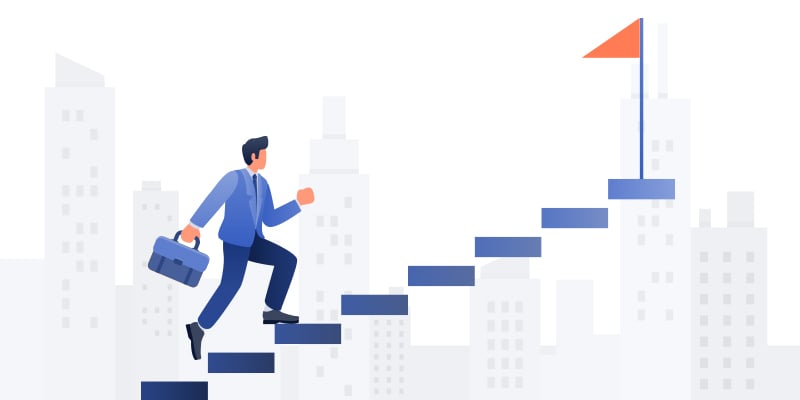
According to a 2019 Gartner report on top HR priorities, 66% of the HR leaders consider building critical skills and competencies for the organization as their topmost priority.
Newly learned digital skills typically have a half-life as short as two years. Technological growth is so rapid that skills are obsolete in no time. Continuous learning has become a business necessity.
Help your People Learn and Grow
A learning organization is one that continuously prepares its people for changing roles and personal and professional growth. Getting started with a culture of continuous learning requires a shift from static training methods, from a “course mentality” to a performance focus. This shift focuses on integrating learning into work, so learners directly apply the knowledge gained.
Managers must play a much more active role by monitoring skills gaps and working with L&D to provide the right resources. They also bear the responsibility of
- creating a mindset that is open to growth,
- stirring curiosity and encouraging their people to use their resources when they need to know something new, and
- setting appropriate learning goals.
Learning Strategies That Foster a Culture of Continuous Learning
Adaptive Learning
You can count on adaptive learning if you are planning to engage your people with a continuous learning journey. Adaptive learning can be the best way to offer your people personalized learning in terms of pace, concepts and types of assessment.
This modality uses your learner’s interests, organizational objectives, assess their knowledge, skills and deliver targeted content to meet their learning goals. Instead of an adhoc assessment from a learning module, it continuously evaluates learners interests, what is required for the organization and ensures learning is progressive.
Mobile learning
With mobile learning, your people can tap into learning using the devices they use every day. This is a great add-on for those employees on road and those that are spread across multiple remote locations. They can access learning online or offline depending on their needs.
Microlearning
Your people are busy, and they may not find time to sit through lengthy courses, but they do need to learn.
Microlearning offers learning in digestible short chunks with each module focusing on just in time learning need for that hour. This can help your people learn just what they want without the need of searching through large catalogs or skimming through long courses.
Provide Resources, Not Courses
Put relevant and helpful resources (instead of courses) at your employees’ fingertips. Make these resources easy to find and access to reduce friction from the learning/work flow.
How does it help?
Creating a continuous learning culture can help your people drive value and results for your organization.
Expand your employee skill set to boost performance and meet the future
A continuous learning culture can keep your people updated on the tools and technology and help them gain domain-specific skills that are required to perform their job effectively. This also promotes learning while performing their job, leads to better retention and performance.
Constant upskilling will help your people realize that they are valued. They will connect emotionally and go the extra mile to give their best.
Retains your people
Opportunities that help your people learn can expand their capabilities and also offer them career progression opportunities. This is one of the factors that attracts new talent and retains existing talent. Gallup reported that 87% of millennials rate "professional or career growth and development opportunities" as important to them in a job;
A growing culture innovates
Constant learning makes your people proactive in their job and sparks their creativity. It also helps them innovate and enjoy solving problems. Creating and sustaining a learning culture in your organization can:
- Keep your people competent and confident.
- Reduce the need to search for new people with specific skills.
- Reduce overall costs. Developing your staff is much affordable than hiring new employees.
In times when change is only the constant, developing your people is the key to competitive advantage. Make it a consistent practice to build a development mindset within your organization.
Pixentia is a full-service technology company dedicated to helping clients solve business problems, improve the capability of their people, and achieve better results

